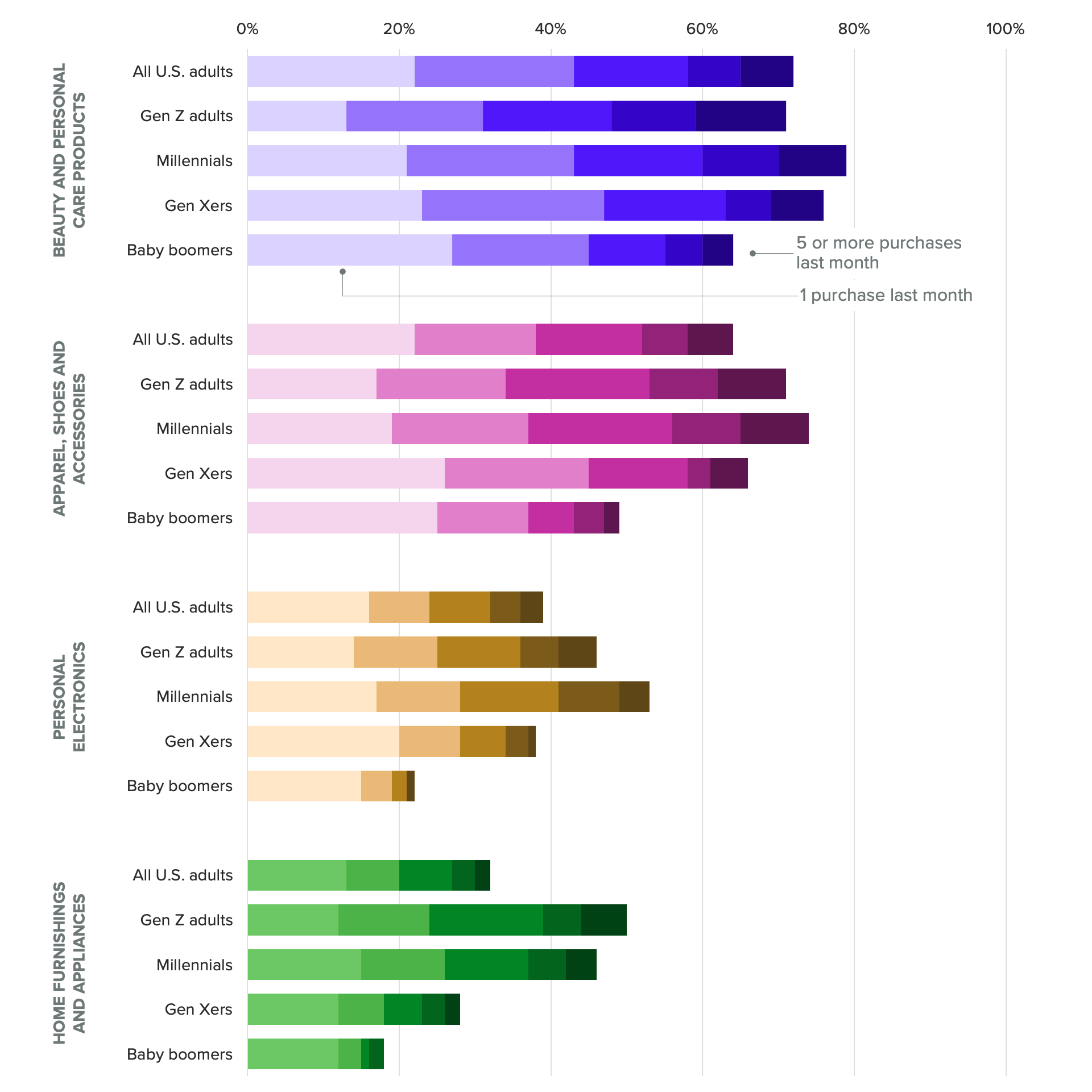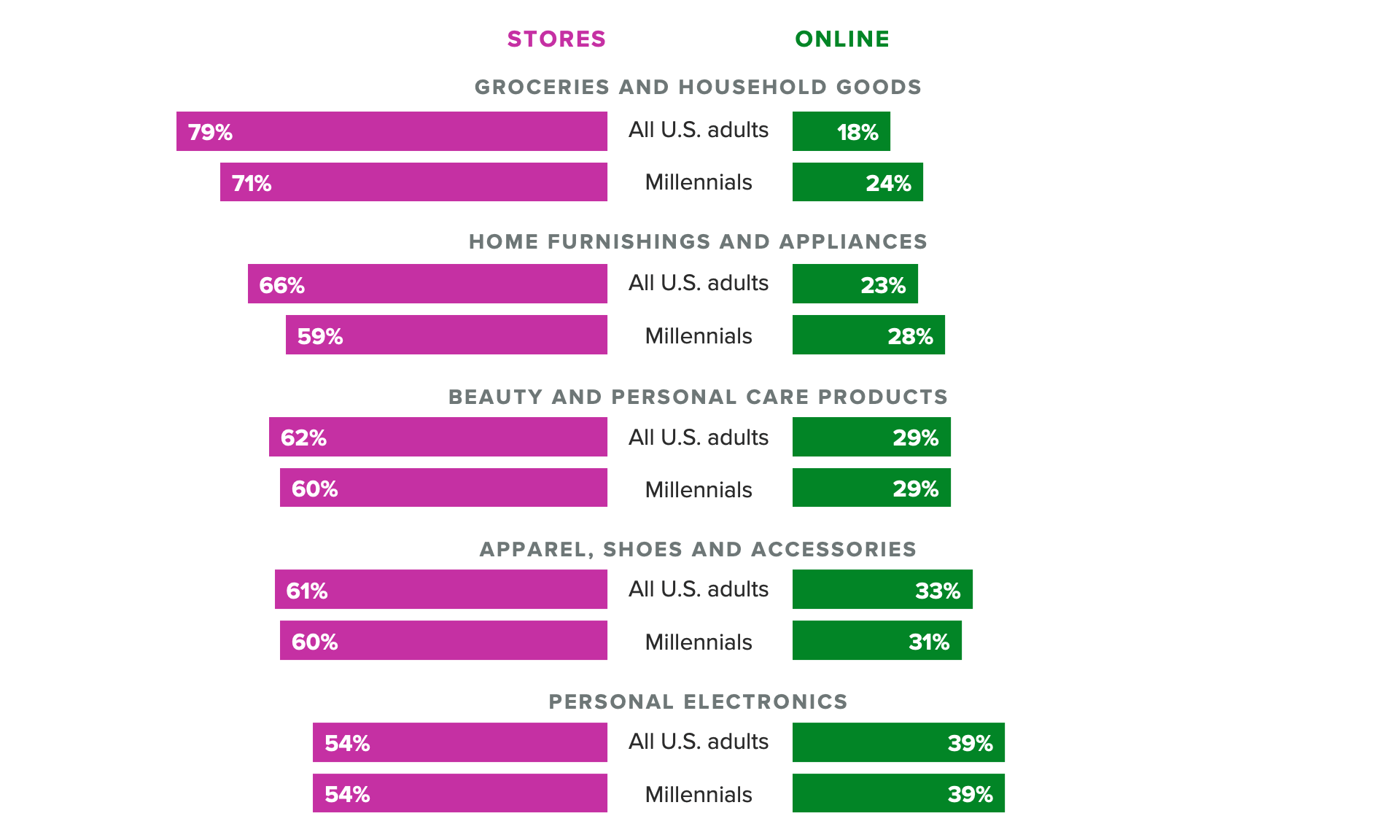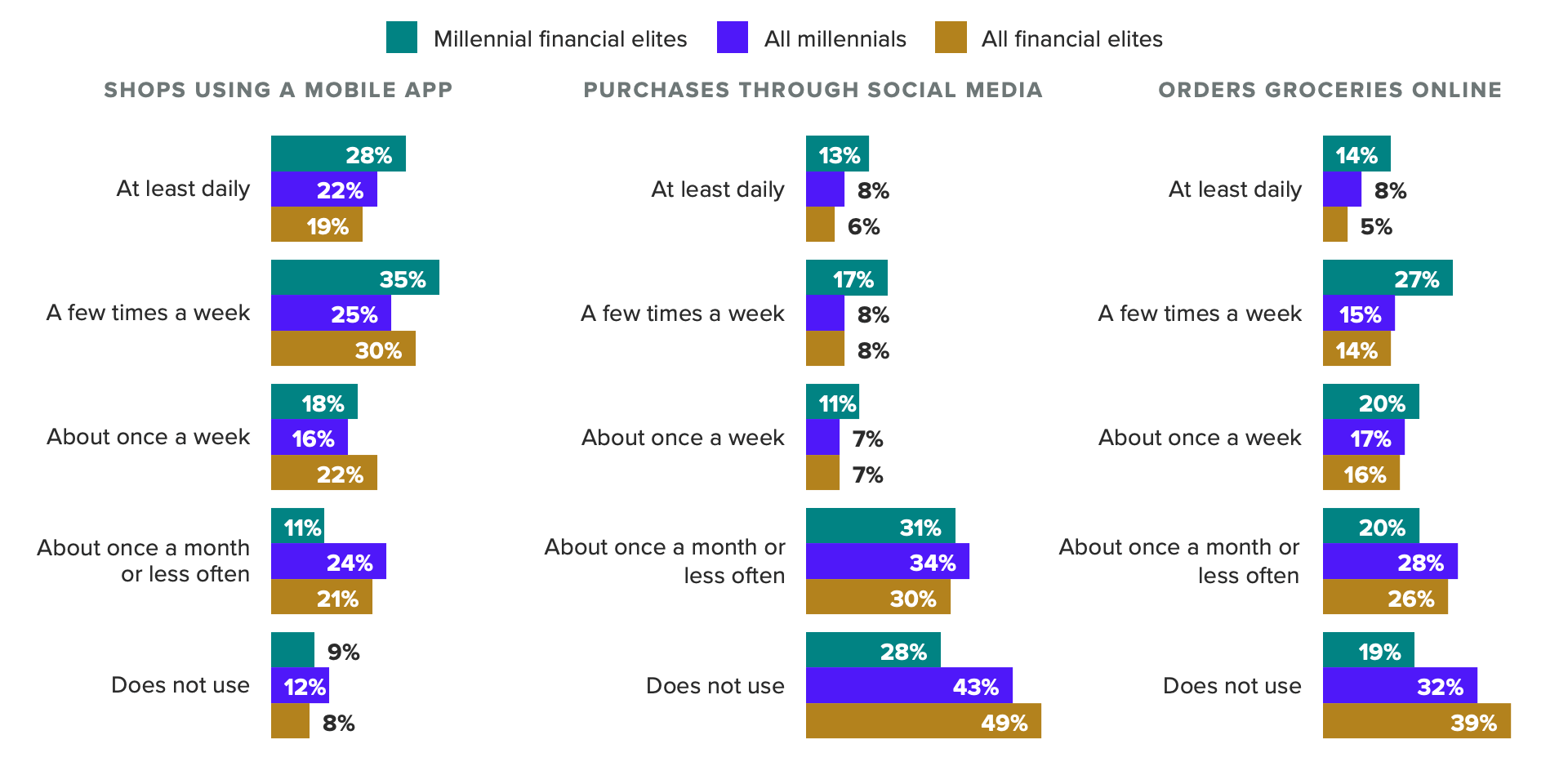As Millennials Enter Middle Age, Their Shopping Habits Are Worth Revisiting

Key Takeaways
Millennials are frequent shoppers: In most discretionary categories they buy more than any other generation on a monthly basis.
Millennials prioritize the convenience of online shopping at higher rates than other consumers, and are more likely than others to prefer shopping online for groceries (24% versus 18% of the general population) and home furnishings (28% versus 23%).
High-earning millennials, the financial elites of the generation, are particularly likely to shop online extremely frequently, ordering through social media more often than their economic and generational peers.
Data Downloads
Pro+ subscribers are able to download the datasets that underpin Morning Consult Pro's reports and analysis. Contact us to get access.
Much of what drives millennials’ current shopping habits is due to their life stage and lifestyle. They’re in the prime of their family building years, as more than half of millennials have kids at home. They’re also more likely than others to say they live in urban areas (38% of millennials versus 30% of the general population). That number rises substantially for high earners: 47% of millennials with six figure incomes live in urban areas, versus 29% of their economic peers in the general population.
These factors don’t just describe millennials’ home lives. Having children changes the way consumers shop, from what brands they buy to their preference for grocery delivery (to avoiding bringing easily distracted children down the cereal aisle). Living in urban centers changes not only what stores are available nearby, but fulfillment preferences and expectations.
While Gen Z and Gen Alpha garner far more attention from brands and marketers, millennials’ purchasing habits are worth revisiting as this generation enters middle age.
Millennials shop — a lot
Millennials are high volume shoppers. In three of four categories in this analysis, millennials came out on top in terms of purchase volume. In our November retail tracking survey, Gen Zers beat out millennials in home furnishing shopping volume, but that category also sees more fluctuation due to its lower overall shopping volume. For beauty products, apparel and electronics, millennials dominate.
Millennials are high volume shoppers across categories

Millennials and Gen Zers are typically the biggest overall spenders in discretionary categories. Consumption is a big part of modern youth culture, and millennials are not only shopping for themselves but bringing their children along for the ride.
Millennials have a stronger bias to online shopping in unconventional categories
Millennials typically show the highest overall propensity for online shopping of all generations. At a category level, this is most apparent in millennials’ habits of buying groceries and furniture online. Consumers have the lowest overall preference for online shopping in these categories, as tomatoes and sofas are usually best evaluated in person. In categories that are easier to evaluate online, like apparel and personal electronics, millennials’ channel preferences match the general population.
Millennials show a stronger inclination towards online shopping for groceries and home furnishings than the general population

Millennials came of age alongside the internet, and enjoy the convenience of online shopping more than most. Taking advantage of the convenience of online shopping across categories is more common among wealthier consumers. This is especially true when online shopping involves additional fees, like having your groceries delivered. Given that many shoppers are still feeling the pain of higher prices at the grocery store after the post-pandemic inflation spikes, wealthy shoppers are far more willing to add a convenience fee to their grocery bill.
Millennial financial elites are power shoppers
The millennial lament that the opportunities that were promised never came to fruition has been memed into oblivion (as if life would just give you lemons, etc etc). While the mismatch of promise and reality certainly exists for a generation that has seen at least three once-in-a-lifetime world shattering events as adults, a select few are thriving.
Millennial financial elites, those who have household incomes over $100,000 and $50,000 or more in investments, are living it up. They travel more often, have food delivered more often, and shop online a lot more often than both their millennial and financial elite counterparts in other generations.
Millennial financial elites shop online more often than their financial and generational counterparts

How do you like them lemons? These city-dwelling, UberEats and Amazon addicted consumers have fallen out of the spotlight of late night comedian jokes and think pieces, but should still be front and center for e-commerce brands that can fulfill all their consumption desires, in two days or less.